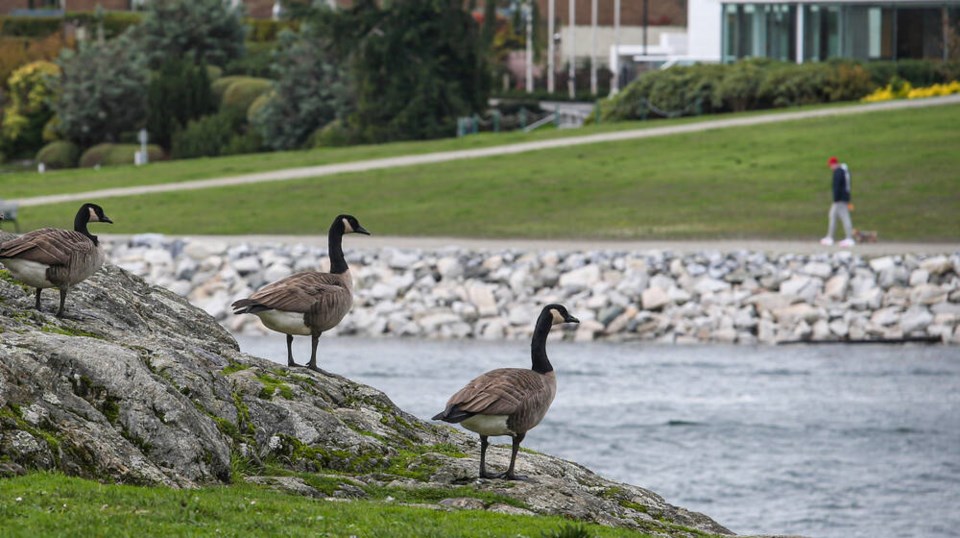Canada goose populations have exploded on the Island in recent decades, with the large birds damaging delicate ecosystems, ravaging farmers’ fields and invading parks, golf courses and playing fields, leaving massive amounts of poop in their wake.
The Capital Regional District is hoping to halt the proliferation of geese with egg-addling and culling, setting up a new regional service that would include monitoring and mapping of populations and public education.
Voters in the CRD have until noon on Jan. 23 to vote against the plan. Under the alternative approval process being used, 10 per cent of electors must submit a form saying they are against the proposal for it to fail.
If that threshold is not reached, the plan goes to the CRD’s board for approval. First steps would be taken this year.
Chairman Colin Plant said Monday the CRD board is concerned about the impact of non-migratory geese on the environment and farmers, adding the population is growing so fast that the problem is only going to get worse.
The Canada goose population in the region is 10,000 to 15,000 birds, with an estimated 3,500 to 7,000 overwintering in the area. They are also expanding their territory, moving into areas they haven’t settled in before, such as fragile nearby islands.
Survey data from 2017-2021 indicates the population is roughly doubling every 4.3 years, the CRD said.
The large number of Canada geese on Vancouver Island is a relatively recent phenomenon.
During the first half of the 20th century, Canada geese were mainly a migratory and summer visitor to most of B.C., the Guardians of Mid-Island Estuaries Society said in a report to the CRD.
One sub-species was known to breed in small numbers on northern Vancouver Island but did not breed on the south Island, the report said.
But starting in the 1950s and continuing into the 1970s and 1980s, Canada geese were captured from elsewhere in the country and brought to Vancouver Island and coastal B.C. to establish breeding populations, in part to provide hunting opportunities.
By the 1990s, the birds were nesting in most of southeastern Vancouver Island, the society said.
Plant said the CRD board is no longer willing to wait for the province to do something about the problem.
The first year of the new regional service would come with a potential $250,000 budget, although the CRD’s budget is still being finalized.
The CRD would be the lead agency and hopes to work with other jurisdictions and agencies, First Nations and municipalities.
The primary focus will be addling or shaking goose eggs, Plant said, although culls would also be part of the initiative.
Culls have been tried before. In 2015, the CRD had a permit to cull 250 geese but only found and killed 43. Parksville culled 484 the following year because of damage to an estuary, prompting a protest from animal rights activists.
The Guardians of Mid-Island Estuaries Society, working with First Nations and CRD crews, said that in 2021, 241 nests with 1,298 eggs were addled.
The proposed service would be ongoing and future budgets would depend on annual planning and budget reviews, said Glenn Harris, senior manager of environmental protection for the CRD.
“Population targets may or may not be developed as the program develops and impacts are assessed,” he said.
In 2020, then-Juan de Fuca director Mike Hicks won accolades for launching what he dubbed a “poop Zamboni” to sweep up goose dung at at playing fields. Federal gas tax funds were used to buy the $10,000 machine.
For a link to the form, go to: Canada Goose Management Service AAP at crd.bc.ca.



